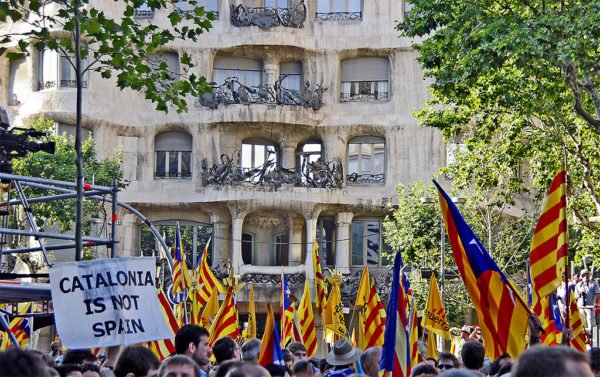Catalonia Independence: Spain’s PM Mariano Rajoy Unveils Plans to Remove Separatist Leaders
Spain’s PM Mariano Rajoy has unveiled plans to remove Catalonia’s leaders and take control of the separatist region.
Speaking after an emergency cabinet meeting on October 21, PM Mariano Rajoy stopped short of dissolving Catalonia’s parliament but put forward plans for elections in the region.
The measures must now be approved by Spain’s Senate in the next few days.
The plans come almost three weeks after Catalonia held a disputed independence referendum on October 1.
Catalonia’s leader Carles Puigdemont has ignored pleas from the national government to withdraw the independence bid.
Mariano Rajoy said the government had no choice but to push to impose direct rule, arguing that the Catalan government’s actions were “contrary to the law and seeking confrontation”.
This will be via Article 155 of Spain’s constitution, which allows it to impose direct rule in a crisis on any of the country’s semi-autonomous regions.
Spain’s Senate will vote within the week, PM Mariano Rajoy said at a press conference. He said it was “not our wish, it was not our intention” to trigger the article.
Catalonia Independence: Spain Prepared to Suspend Catalan Autonomy
Catalonia Independence: Separatist Leaders Jordi Sánchez and Jordi Cuixart Detained
Catalonia Signs Declaration of Independence from Spain, But Proposes to Suspend Vote Result
Spanish law dictates that elections must be held within six months of Article 155 being triggered, but the prime minister said it was imperative that the vote be held much sooner.
Catalonia’s regional government held a referendum to ask residents of the region if they wanted to break away from Spain.
Of the 43% of Catalans said to have taken part, 90% voted in favor of independence. However, many anti-independence supporters boycotted the ballot, arguing it was not valid.
Carles Puigdemont and other regional leaders then signed a declaration of independence, but immediately suspended it in order to allow for talks.
He then defied two deadlines set by the national government to clarify Catalonia’s position, and the government announced it would pursue Article 155.
Article 155 of the Spanish constitution allows the national government to impose direct rule over Spain’s semi-autonomous regions in the event of a crisis. It has never before been invoked in democratic Spain.
The article says that if a region’s government “acts in a way that seriously threatens the general interest of Spain”, Madrid can “take necessary measures to oblige it forcibly to comply”.
Catalonia currently enjoys significant autonomy from Spain, including control over its own policing, education and healthcare.
Mariano Rajoy’s conservative Popular Party (PP) holds a majority in the Senate, meaning the proposals are likely to pass.
Catalonia accounts for about a fifth of Spain’s economic output, and supporters of independence say the region contributes too much to the national economy.
Opponents argue that Catalonia is stronger as a part of Spain, and that breaking away would lead to economic disaster for the country as a whole.
Nearly 1,200 companies based in Catalonia have re-registered in other parts of Spain since the referendum, hoping to minimize instability, according to the AFP.
This week, Spain cut its national growth forecast for 2018 from 2.6% to 2.3%, blaming uncertainty over the future of Catalan independence.

